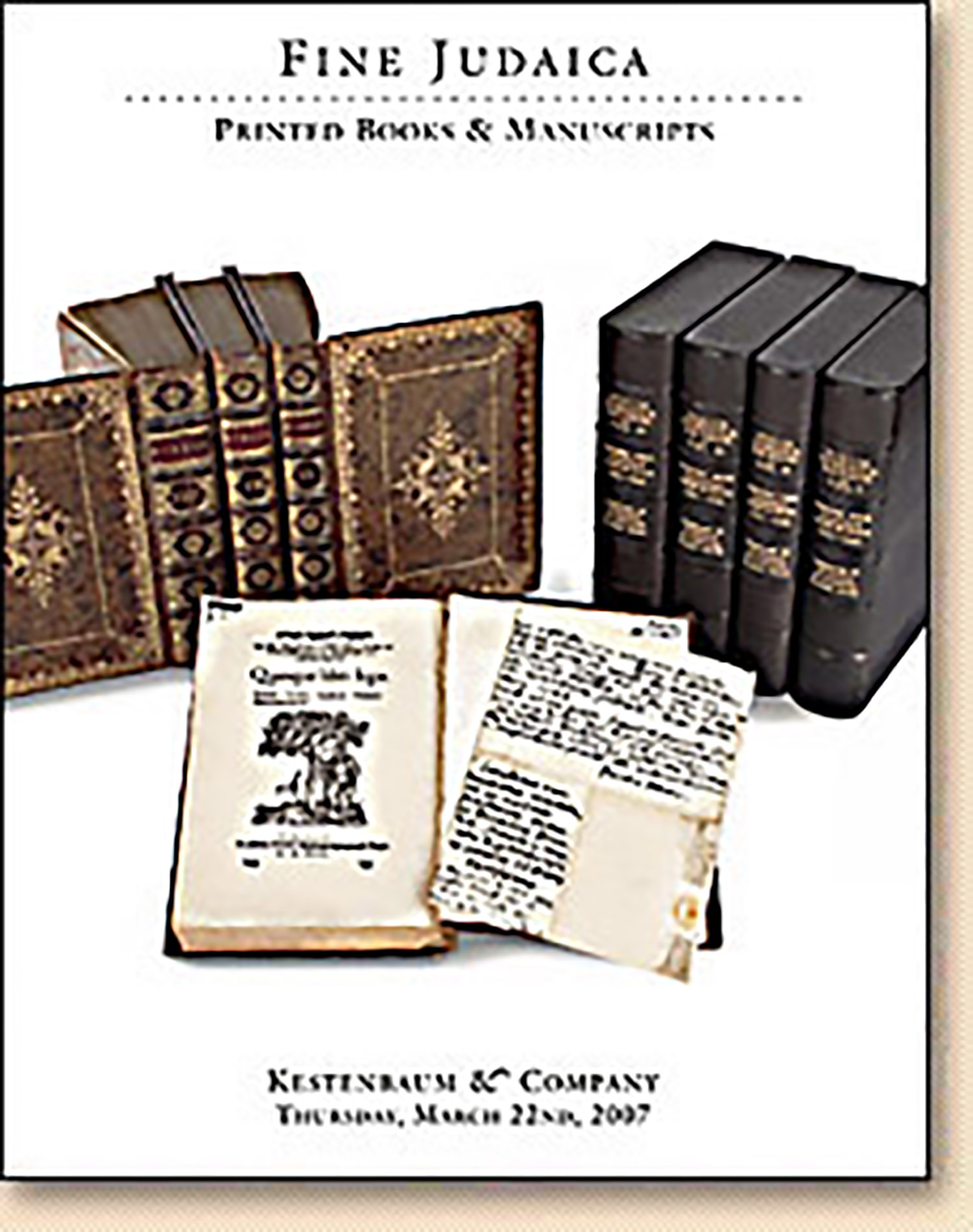(Liturgy). Monteil, Abraham (Ed). Seder le-Yamim Nora’im ke-Minhag K.K. Carpentras [Prayer Book for New Year and Day of Atonement According to the Rite of the Community of Carpentras]

AUCTION 36 |
Thursday, March 22nd,
2007 at 1:00
Fine Judaica: Printed Books & Manuscripts
Lot 74
(FRENCH JUDAICA).
(Liturgy). Monteil, Abraham (Ed). Seder le-Yamim Nora’im ke-Minhag K.K. Carpentras [Prayer Book for New Year and Day of Atonement According to the Rite of the Community of Carpentras]
Amsterdam: Hertz Levi Rofe 1739
Est: $1,200 - $1,800
PRICE REALIZED $1,100
Haskamoth (Approbations) of Rabbis of Carpentras: Israel Crémieux, Menachem Leon, Jacob de Lunel and Abraham de Rocca Martino
Several members of the Valabrégue Family of Carpentras distinguished themselves. Mardochée-Georges Valabrégue (1852-1934) was a brigadier-general in the French army and recipient of the Legion of Honor in 1904. Albin Valabrégue (b.1853) was a French dramatist and distinguished playright. See JE, Vol. XII, p. 395
The Lost Liturgy of the Comtat Venaissin of Southern France - An Overview: Lots 74 - 80
After the Expulsion of the Jews from France in the 14th-century, a handful remained in the semi-independent territories of the South, under the rule of the Counts of Provence. (Thence they were refered to as “Comtat Jews,” after the Count.) Four petite Jewish communities were tolerated in the French possessions of the Holy-See: Avignon, Carpentras, Cavaillon and Lisle-sur-Sorgue.
"Cut off for centuries from their fellow Jews in other countries, the communities...evolved in the course of time their own particular species of Jewish culture, ranging from their Judeo-Provencal patois to their characteristic synagogal architecture, from their pronunciation of Hebrew to their folklore, from their calligraphy to their cuisine. Above all, as was natural, they evolved their own rite of prayers—the former Provencal rite, embellished with local peculiarities, prayers to suit local conditions, and hymns by local poets." (Cecil Roth, Studies in Books and Booklore (1972), pp. 81-2).
With the French Revolution, these exotic Jews were absorbed into mainstream French society. “About 2,000 Jews lived in the four communities of the papal province of Avignon and Comtat Venaissin. The first impressive request for the annexation of the papal province by France, made in 1789 by the deputy Ch. F. Bouche, contained the projection of a status for Jews.” (Szajkowski, Jews and the French Revolutions of 1789, 1830 and 1848 (1970), p. 873).
Some of the prayer books for this tetrapolis were published internally in Avignon and Carpentras, while others were printed in Amsterdam, then the major center of Jewish printing in Western Europe. The names of the editors of these prayerbooks, especially Crémieux and Milhaud are those of the most distinguished and famous Provencal familes, whose sons over subsequent generations excelled in a multitude of disciplines across a wide stage
